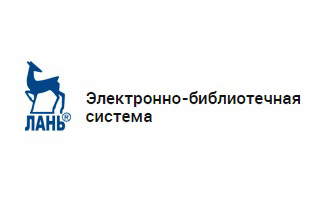 |
|
| ISSN 0536-1028 (Print) ISSN 2686-9853 (Online) |
Peer Review Process
All the articles that are received by the editor’s pass the obligatory procedure of double anonymous review.
Primary review of the articles received by the editor’s is accomplished by the chief editor and deputy chief editor. At this stage they can reject the articles that don’t meet the requirements of the editors.
A scientific article that meets the specialization of the journal is directed to neutral evaluation, performed by the two experts in the corresponding study who have Doctor or Candidate of sciences degree. Representatives of editorial board may be involved as experts.
In their advisability decision on article publication, each reviewer briefly summarizes the contents of the article, notes the article’s name correspondence, scientific novelty of the article, timeliness of the topic, evaluates the strength of the problem’s solution, the author’s awareness of scientific literature on the question under consideration, theh article’s consistency, its sequence and style of narrative.
The article is examined by the reviewer within two weeks. If any remarks, the article is either rejected, or returned to the authors for further development. The copy of review is attached (the review is anonymous).
After its development, the article is directed to the same reviewers again, and, if approved, it is published. In case of disputes, when the authors don’t agree with the reviewer’s remarks, the article is directed to the other reviewer or reviewers. The final decision on the article publication or rejection is made by the editorial board.
Editorial office
Under construction
History
In 1957, the Ministry of Higher Education of the USSR made a decision to create two series of university scientific journals: “Scientific Reports of Universities. Mining.” and “News of the Higher Institutions. Mining Journal”. The Moscow Mining Institute was commissioned to produce the first title and the Sverdlovsk Mining Institute the second title (Order of the USSR Ministry of Higher Institutions of August 20, 1957, № I-86). The first issue was published in January 1958.
Thereafter both publications became one and from 1959 “News of the Higher Institutions. Mining Journal”, published by the Sverdlovsk Mining Institute named after V. V. Vakhrushev, has become a major periodical for mining universities, covering the issues of mining sciences, theory, technology and the engineering of mining.
Following the decree of the Ministry of Higher Education of the USSR: “... the publication of this journal will provide academic staff of mining schools and departments with more opportunities for the publication of scientific papers; it will facilitate organization of an extensive exchange of scientific and technical information between universities, research and development and design institutions and mining companies in order to promote scientific and technological progress and improve the quality of engineers and scientists for the mining industry”.
The first editor-in-chief, Head of the Department of Mine Construction of the Sverdlovsk Mining Institute, Doctor of Technical Sciences, Professor Sergei Fedorov played a significant role in creation of the journal. He designed the structure of the journal, formed the first editorial board and the technical revision team. In 1958-1959 the journal was edited by Dr. Sergei Volotkovski, Head of the Department of Electrification of Mining Enterprises.
For over 40 years the editor-in-chief was Professor Abram Trop. He was the Head of the Department of Automation of Production, an eminent scholar, a true patriot of mining education, founder and director of an established scientific school from which about 200 Candidates of Sciences have graduated
Over the years talented scientists and renowned experts in their fields, including Petr Vaganov, Vitali Simanov and Lev Sorokin, worked as deputy editors-in-chief and editorial board members. Currently Oleg Latyshev, Dr. of Technical Sciences, Professor of the Department of Mine Construction of the Ural State Mining University, a renowned expert in the field of rock physics holds this position.
From 2001 to 2009 Professor Ivan Dementiev, former Head of the Department of the Development of Ore Deposits, Vice President for Academic Affairs and Rector of the Ural State Mining and Geological Academy (now USMU) held the position of the editor-in-chief.
Since 2009 Professor Mikhail Viktorovich Kornilkov, Dr. of Technical Sciences, Head of the Department of Mine Construction, an expert in repairing underground mine workings, in addition to the technology and safety of blasting operations, and Rostechnadzor industrial safety expert held the post of the editor-in-chief.
The contributors to the journals know the executive secretaries and editors, highly skilled professionals in their field, very well: Elena Kulikova, Svetlana Kosheleva and Rimma Brodyagina, who worked in the editorial office for more than 50 years since its inception.
The journal publishes articles written by professors, experts in mining, representatives of academic and industrial research and design institutes. The journal’s team has been actively collaborating with the representatives of scientific schools of St. Petersburg, Moscow, Kuzbass, Irkutsk, Krasnoyarsk, Karaganda, Perm, Donetsk, Dnepropetrovsk, Krivoy Rog, Kazakh, Tula, Magnitogorsk, Ural Technical Universities and many other mining schools together with universities, research centers and mining institutes of RAS, design and scientific organizations.
“News of the Higher Institutions. Mining Journal.” is included in the HAC list of periodicals publishing the scientific research results of doctoral thesis and dissertations of candidates of science. In accordance with the requirements of the Federal State Educational Standards for training in the field of mining, the journal is also an essential component of university libraries.
Editorial Code of Ethics
Editorial Board and the editorial staff of the Journal recognize great importance of compliance with the Editorial Code of Ethics. In our work we follow the Code of Ethics of scientific publications developed by the Committee on the Ethics of Scientific Publications (http://publicet.org)
Principles of the professional ethics in the work of an editor and a publisher
In his/her work, an editor is responsible for the publication of works with copyright, which requires strict adherence to these fundamental principles:
- When making a decision about publishing the editor of the scientific journal is guided by the reliability of data and scientific importance of the work.
- The editor should evaluate the intellectual content of the manuscripts, regardless of race, gender, sexual orientation, religion, origin, nationality, social status or political affiliation of the authors.
- Unpublished data acquired from the submitted manuscripts should not be used for personal purposes or passed on to third parties without the author’s written consent. Information or ideas obtained in the course of editing and related to potential benefits must be kept confidential and not used for the purpose of personal gain.
- The editor should not allow publication of the information if there is sufficient reason to believe that it has been plagiarised.
- The editor together with the publisher should not leave unanswered complaints concerning the considered manuscripts or published materials; in case of a conflict they should take all necessary measures to redress the violated rights.
Ethical principles of the reviewer’s work
A reviewer provides scientific expertise of copyright material; therefore his/her actions should be impartial and unbiased. It involves following these principles:
- A manuscript received for review should be treated as a confidential document, which cannot be passed on for review or discussion to those third parties who do not have full rights from the editors.
- The reviewer is obliged to give an objective and reasoned assessment of the research findings.
- Personal criticism of the author is not acceptable.
- Unpublished data from the manuscripts submitted for review should not be used by the reviewer for personal purposes.
- The reviewer who, in his/her opinion, isn’t qualified to review the manuscript, or cannot be objective, for example, in case of a conflict of interest with the author or organization, should inform the editor with a request to exclude him/her from reviewing of this manuscript.
Guiding principles for authors of scientific publications
The author (or group of authors) is aware that they bear primary responsibility for the novelty and validity of the results of scientific research, which involves following these principles:
- The authors should provide reliable research results. Intentionally false or fraudulent statements are unacceptable.
- Authors must ensure that the research findings, outlined in the submitted manuscript, are completely original. Extracts or statements taken from an external source must be presented with a clear reference to the author and the source. Excessive citations and plagiarism in any form, including unregistered quotes, paraphrasing or assignment of rights to the results of other people's research is unethical and unacceptable.
- It is necessary to recognize the contribution of all those who in one way or another influenced the course of the research. Thus, the author of the article should clearly present the references to other works that influenced the research.
- Authors should not submit the manuscript which has already been submitted for publication to another journal and is currently under consideration, as well as an article already published in another journal.
- The list of co-authors of the article should include all those who have made a significant contribution to the research. It is unacceptable to include people who did not take part in the research as co-authors.
- If the author finds significant errors or inaccuracies in the article on the stage of the revision of the article or after its publication, he/she must notify the editor as soon as possible.
Journal sections
JOURNAL SECTIONS
• Geotechnology, mining machinery
• Geomechanics. Rock breaking
• Mine surveying. Mining geology
• Mineral processing
• Occupational safety and health
• Information technology in mining
• Mining higher education
• History. Data. Reviews

This work is licensed under a Creative Commons Attribution 4.0 International License.







